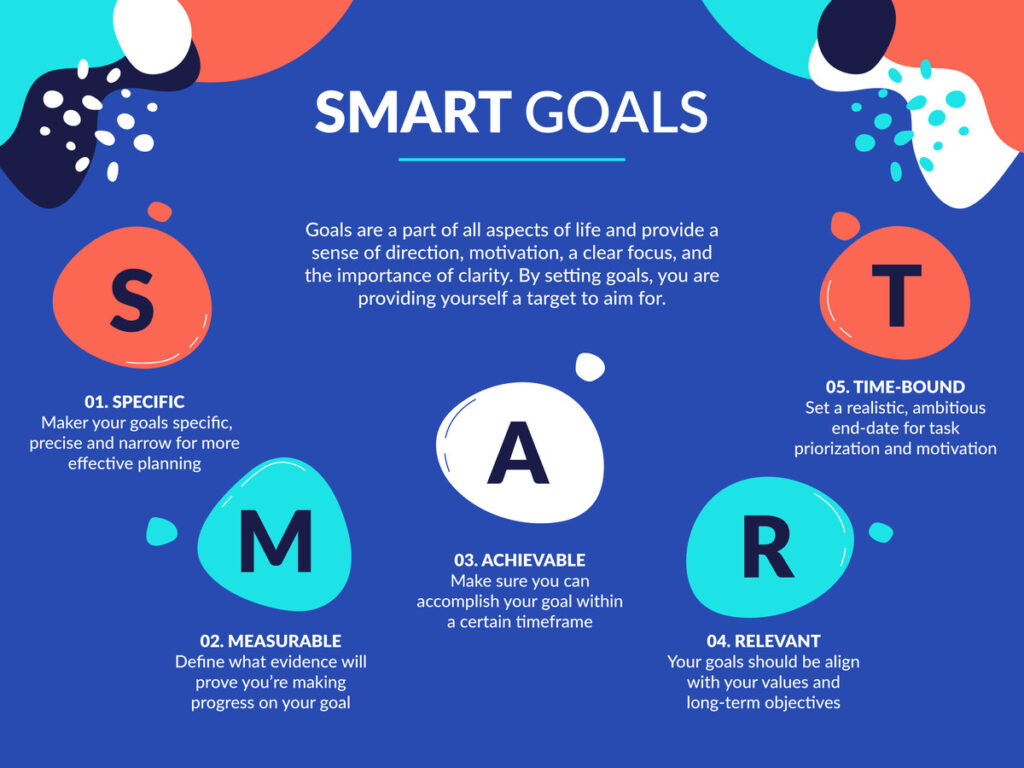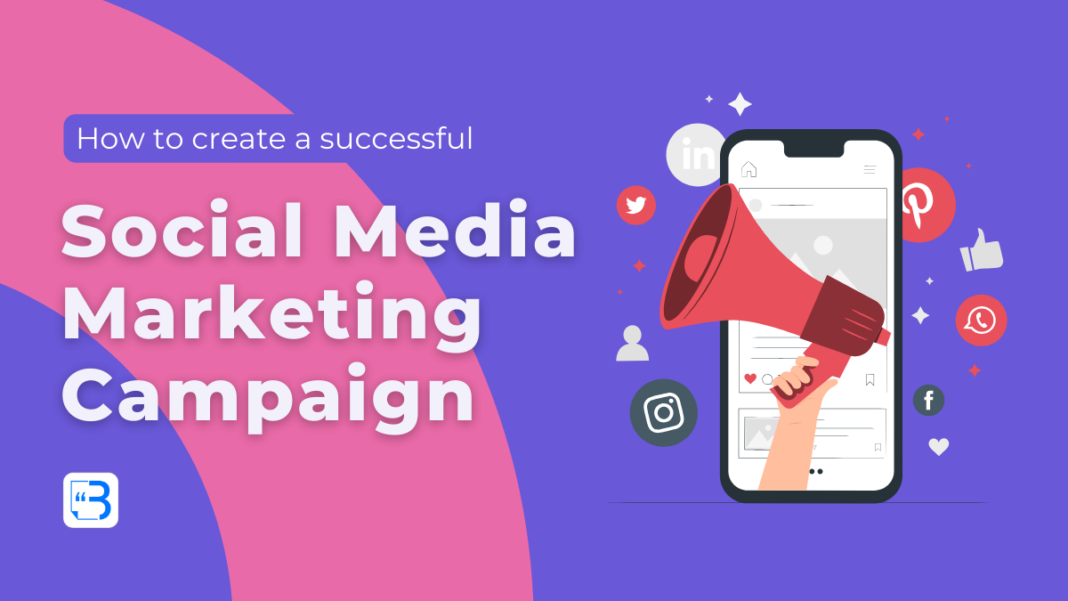Introduction: Your Blueprint for a Successful Social Media Marketing Campaign
In the fast-paced world of digital marketing, social media stands as one of the most powerful tools available for businesses of all sizes. Whether you’re a seasoned marketer or a newcomer looking to make a splash, crafting a robust social media marketing campaign is crucial for online success. However, navigating the complexities of social media marketing can often feel like a daunting task. That’s why we’ve created this comprehensive guide to walk you through every essential step for launching a successful campaign that meets your business objectives.
From defining razor-sharp goals and understanding your target audience to choosing the perfect platforms and leveraging the power of analytics, this guide will serve as your roadmap. We’ll cover each facet in detail, providing actionable tips, strategies, and insights to propel your social media marketing campaign from good to exceptional. By following this guide, you’ll be well-positioned to craft a compelling social media strategy that not only captures attention but also drives meaningful engagement and yields a strong return on investment.
So, if you’re ready to elevate your brand’s online presence and create a social media marketing campaign that truly resonates, read on to discover how.
Table of Contents
1. Define Your Goals
Creating a social media marketing campaign without well-defined goals is like sailing a ship without a compass—you might move, but you’ll have no direction. Hence, establishing specific, measurable, achievable, relevant, and time-bound (SMART) goals is the cornerstone for success. Let’s dive deeper into why you need goals and the types of goals commonly involved in social media marketing.
Why Do You Need Goals?
- Direction: Goals give your social media marketing campaign a sense of direction. You can’t develop an effective strategy unless you know where you’re going.
- Measurement: What gets measured gets managed. Without goals, you won’t have any benchmarks to measure your success or identify areas for improvement.
- Motivation: Goals serve as a motivational tool for your team. When everyone knows what they’re working toward, it creates a sense of unity and purpose.
- Resource Allocation: Knowing your objectives helps you allocate your resources more effectively. You’ll know where to put your money, time, and personnel for the maximum impact.
- Accountability: Goals hold you and your team accountable for performance. They enable you to track your actions and evaluate the results.
Common Goals in Social Media Marketing
Brand Awareness
- Definition: This involves increasing the number of people who are aware of your brand, products, or services.
- Metric: Follower count, impressions, and reach.
- SMART Goal Example: Increase Instagram follower count by 20% in the next three months.
Engagement
- Definition: Engagement refers to how people are interacting with your content—likes, shares, comments, etc.
- Metric: Engagement rate, likes, shares, comments, retweets, etc.
- SMART Goal Example: Achieve an average engagement rate of 4% per post over the next two months.
Lead Generation
- Definition: This involves capturing information from interested prospects so that you can market to them later.
- Metric: Number of leads captured, cost per lead.
- SMART Goal Example: Generate 500 leads from Facebook ads in the next 45 days.
Sales
- Definition: The ultimate aim for many, this goal pertains to converting your social media leads into customers.
- Metric: Sales figures, ROI, average order value.
- SMART Goal Example: Increase monthly sales from social media referrals by 15% in the next two months.
Customer Retention
- Definition: This involves engaging with existing customers to encourage repeat business and minimize churn rate.
- Metric: Customer retention rate, customer lifetime value.
- SMART Goal Example: Reduce churn rate by 10% in the next quarter using social media customer service initiatives.
By defining your goals using the SMART criteria, you set the stage for a purpose-driven social media marketing campaign. This will guide your actions, help you allocate resources, and make it much easier to measure success.

2. Identify Your Target Audience
Understanding your target audience is the linchpin for the success of any social media marketing campaign. An in-depth knowledge of who your potential customers are will inform every other decision you make, from which social media platforms to use to what type of content to create. Let’s delve into the importance of knowing your audience and how to create audience personas for better targeting.
Who are They?
Understanding your audience goes beyond the surface level of knowing that you’re selling pet food to pet owners or office supplies to businesses. You need a 360-degree view of who they are. Consider the following:
- Age: Are you targeting college students, young professionals, or retirees?
- Gender: Is your product or service tailored more towards one gender?
- Location: Are you targeting a local audience, a national audience, or a global audience?
- Interests: What are your audience’s hobbies, interests, or problems they are looking to solve?
- Behaviors: How do they interact with brands online? Do they use social media for research or just for leisure?
- Income Level: Is your product or service a luxury or a necessity? What can your audience afford?
- Pain Points: What problems is your audience facing that your product or service can solve?
- Communication Preferences: Do they like long-form content or quick snippets? Do they engage more with videos or text?
By identifying these demographic and psychographic variables, you’ll be able to tailor your social media marketing campaign more effectively.

Audience Personas
Creating audience personas is essentially crafting fictional, generalized representations of your ideal customers. A persona is a composite sketch that brings your customer data to life by giving it a name, face, and characteristics. For instance, if you’re a fitness apparel brand, you might have the following personas:
- “Gym Junkie Jake”: A 20-30-year-old male who goes to the gym 5 times a week and is very conscious about the brand and quality of his gym gear.
- “Yoga Yasmine”: A 25-40-year-old female who’s into yoga and prefers comfortable, eco-friendly apparel.
- “Casual-Active Carla”: A 30-50-year-old woman who walks and does light exercise but is not committed to a fitness regime. She prioritizes comfort over brand.
Each persona will have its own set of preferences and pain points. For instance, Gym Junkie Jake might want durable and stylish apparel, while Yoga Yasmine might be looking for sustainable materials.
Benefits of Using Personas
- Focused Strategy: Personas help you create a targeted social media marketing campaign tailored for each segment of your audience.
- Better Engagement: Knowing the personas helps in creating content that resonates with each segment, thereby driving higher engagement rates.
- Resource Allocation: Personas help you decide where to put your marketing dollars for maximum effect.
- Stronger Messaging: A clear understanding of your personas makes your messaging more compelling and relatable.
- Enhanced Customer Experience: When you understand your customers’ needs and preferences intimately, you can offer a better experience that fosters loyalty.
To sum up, knowing your target audience and creating personas are crucial steps in crafting a successful social media marketing campaign. They provide the lens through which you can view all your strategies and tactics, ensuring that your messaging is relevant, resonant, and effective.
3. Choose the Right Platforms
Selecting the right social media platforms is akin to choosing the right battlegrounds for your campaign. A poor choice can waste time, money, and resources, while a good choice can significantly amplify your reach and impact. Let’s explore how to make that crucial decision by evaluating the key players in the social media landscape and aligning them with your audience’s preferences.

The Big Players
- Good For: Brand awareness, advertising, community-building, and news dissemination.
- Demographics: A broad demographic ranging from teenagers to older adults.
- Types of Content: Video, articles, live streams, and photos.
- Best For: Businesses looking for a broad reach and targeting capabilities through Facebook Ads.
- Good For: Visual storytelling, brand aesthetics, and influencer collaborations.
- Demographics: Primarily younger audiences, ages 18-34.
- Types of Content: Photos, short-form videos, Stories, and IGTV.
- Best For: Brands that thrive on visual content, including fashion, food, and lifestyle.
- Good For: Real-time updates, news, customer service, and public relations.
- Demographics: Broad but leans towards younger and tech-savvy individuals.
- Types of Content: Short updates, articles, GIFs, and short videos.
- Best For: Brands that need to stay current, offer customer service, or manage reputation.
- Good For: B2B marketing, professional networking, and thought leadership.
- Demographics: Working professionals and decision-makers.
- Types of Content: Articles, job postings, company updates, and professional achievements.
- Best For: B2B companies, consultants, and recruiters.
- Good For: Lifestyle content, visual inspiration, DIY, and e-commerce.
- Demographics: Largely female audience interested in fashion, food, home decor, and more.
- Types of Content: Pins, visual boards.
- Best For: E-commerce brands, and businesses related to lifestyle, fashion, and home improvement.
Align with Your Audience
Choosing a platform just because it’s popular is a rookie mistake. Instead, your choice should align with your target audience’s preferences and behaviors. Here’s how to go about it:
- Research: Utilize demographic data and insights to understand where your target audience hangs out online.
- Relevance: Choose platforms that are relevant to your industry. If you’re in B2B, LinkedIn might be more beneficial than Instagram.
- Capabilities: Each platform offers different tools and features. Make sure they align with your social media marketing campaign goals.
- Resource Allocation: Don’t spread yourself too thin by trying to be everywhere. It’s far more effective to do really well on a couple of platforms than to be mediocre on many.
- Test and Refine: If you’re unsure, start small. Choose one or two platforms and test the waters. Later, you can expand your reach based on performance and audience response.
By choosing the right platforms, you set a strong foundation for your social media marketing campaign. This ensures that your content reaches the right people, at the right time, and in the right format, thereby increasing your chances of achieving your campaign goals.
4. Develop a Content Strategy
Content is the heart and soul of any social media marketing campaign. It’s the vehicle through which your brand connects, communicates, and converts your target audience. But in an online world swamped with content, how can you make yours stand out? The answer lies in developing a solid content strategy that aligns with your brand’s voice and your audience’s needs.
Types of Content
Here’s a closer look at the various types of content you can create:
Educational Content
- Examples: How-to guides, tips and tricks, explainer videos, webinars.
- Purpose: To provide value by solving a problem or answering a question for your audience.
- Best For: Brands that aim to establish themselves as authorities in their field.
Entertaining Content
- Examples: Memes, jokes, funny videos, stories.
- Purpose: To entertain and engage, thereby making your brand more relatable and memorable.
- Best For: Brands that target a younger audience or want to show a lighter, more relatable side.
Inspirational Content
- Examples: Success stories, motivational quotes, uplifting videos.
- Purpose: To inspire your audience and create a positive association with your brand.
- Best For: Any brand that aims to motivate, whether it’s fitness, personal development, or even B2B.
Conversational Content
- Examples: Polls, questions, quizzes, interactive videos.
- Purpose: To foster engagement and dialogue between your brand and your audience.
- Best For: Brands that aim to create a community or want to gather feedback from their audience.
Quality Over Quantity
In the race to stay relevant and visible in the social media landscape, brands often fall into the trap of content saturation—pushing out content for the sake of having something to post. However, quality trumps quantity every time. Here’s why:
- Relevance: Quality content is tailored to the needs and interests of your target audience. It’s not just noise; it serves a purpose.
- Engagement: High-quality content is more likely to be liked, shared, and commented on, which increases your visibility and reach.
- Authority: Consistently providing valuable content establishes your brand as an authority in your field, thereby boosting credibility and trust.
- SEO: Search engines reward valuable, high-quality content. The better your content, the more likely it will be seen, not just on social media, but also in search engine results.
- Resource Optimization: Quality content requires an investment in time, money, and effort. Focusing on quality ensures that your resources are well-spent.
- Customer Retention: Value-added content contributes to a better customer experience, increasing loyalty and retention rates.
To sum up, your content strategy should aim to be a balanced mix of educational, entertaining, inspirational, and conversational elements, tailored to the preferences of your target audience. Prioritize quality over quantity to ensure that each piece of content serves a specific purpose and contributes to achieving your social media marketing campaign goals. Remember, in a world of endless scrolling, quality content is what makes people stop, read, and engage.

5. Create a Content Calendar
A well-executed social media marketing campaign is a marathon, not a sprint. Consistency is key, and the best way to ensure that you’re consistently delivering high-quality content is to create a content calendar. It serves as your roadmap, guiding you on what to post, when to post, and where to post. Let’s delve into why a content calendar is crucial and how you can go about creating one.
Why You Need a Content Calendar
- Consistency: A content calendar helps you maintain a consistent posting schedule, which is essential for keeping your audience engaged and attracting new followers.
- Planning: A calendar allows you to plan ahead, ensuring that you have a balanced mix of content types and topics. This also avoids last-minute scrambles to find something to post.
- Collaboration: If you have a team, a content calendar ensures everyone knows their responsibilities. It helps in coordinating between content creators, graphic designers, and social media managers.
- Analysis: Having a calendar allows you to track what you’ve posted, enabling easier analysis of what’s working and what’s not. This will help you refine future strategies.
- Time Management: Planning and scheduling in advance frees up time to engage with your audience and focus on other aspects of your social media marketing campaign.
Tools to Use
- Hootsuite: A comprehensive social media management tool that allows you to schedule posts, track social media conversations, and measure performance, all from a single dashboard.
- Buffer: Known for its simplicity, Buffer enables you to schedule social media posts across multiple platforms.
- Asana: While not a dedicated social media tool, Asana’s project management capabilities make it easy to plan, coordinate, and track your social media campaigns.
- Google Calendar: For smaller teams or individual entrepreneurs, even a simple tool like Google Calendar can serve the purpose of a content calendar.
How to Create a Content Calendar
- Identify Key Dates: Start by marking important dates relevant to your industry, like holidays, events, or product launches. These are excellent opportunities for thematic content.
- Define Content Buckets: Categorize the different types of content you’ll be posting (educational, entertaining, inspirational, conversational) and allocate them throughout the week or month.
- Assign Responsibilities: If you’re working with a team, assign tasks to individual members. Who is responsible for content creation, graphics, posting, and analytics?
- Choose Platforms: Determine which content will be posted on which social media platforms.
- Set Frequency and Timing: Decide how often you’ll post on each platform. Also, determine the optimal times to post based on when your audience is most active.
- Plan Post Details: For each post, plan out the caption, hashtags, images or videos, and any links you’ll include.
- Review and Approve: Before anything is posted, have a review process in place to ensure that everything aligns with your brand voice and goals.
- Schedule Posts: Use your chosen tool to schedule the posts based on the calendar.
- Monitor and Adjust: After the posts are live, monitor their performance. Make data-driven adjustments to your calendar as needed.
By planning your content in advance and scheduling it to go live at optimal times, you’re not only making your life easier but also maximizing the impact of each piece of content. A content calendar is your best friend in managing a successful social media marketing campaign. It aids in maintaining consistency, ensuring quality, and measuring effectiveness, all of which are essential for achieving your campaign goals.
6. Understand SEO and Hashtags
In the competitive sphere of social media, simply creating great content isn’t enough. Your posts need to be seen by the right people at the right time, and this is where Search Engine Optimization (SEO) and hashtags come into play. While SEO is generally associated with websites, its principles are very much applicable to social media platforms as well. Here’s how you can utilize SEO and hashtags to amplify the reach and effectiveness of your social media marketing campaign.
SEO for Social Media
- Keywords: Just as you use keywords in your blog posts to rank higher in search engines, you should be incorporating relevant keywords in your social media posts and profiles. This improves your posts’ discoverability both on the social media platform itself and through search engines.
- Meta Descriptions: When sharing articles or blog posts, most social media platforms show a meta description. Make sure it’s compelling and includes your targeted keywords.
- URLs and Handles: Your social media URLs and handles should be intuitive and reflective of your brand. This not only increases recognizability but also contributes to SEO.
- Alt Text: For image-heavy platforms like Instagram and Pinterest, use the alt text feature to describe your images using keywords. This makes your images searchable.
Check our social-media articles:
- How to Use Social Media to Increase Website Traffic and Conversions
- The pros and cons of using influencers in social media marketing
- How to use social media to improve customer service and support
- How to grow your social media following
Mastering the Art of Hashtags
Hashtags serve as clickable keywords on social media and are crucial for increasing the visibility of your posts. Here’s how to use them wisely:
- Relevancy: Use hashtags that are relevant to your content. Irrelevant hashtags might bring immediate visibility but will not result in meaningful engagement.
- Uniqueness: While popular hashtags can give your post a broad reach, unique or branded hashtags can create a focused, highly engaged community.
- Number: It’s not about quantity; it’s about quality. Aim for 1-3 meaningful hashtags per post. Anything more can look like spam and dilute the impact of your most relevant hashtags.
- Research: Before you use a hashtag, research it. Who else is using it? How many posts are there? What kind of content is it being used with? This will help you gauge if it’s the right fit for your post.
- Monitor and Analyze: Once you’ve used hashtags, track their performance. Are they getting you the visibility and engagement you desire? Analyzing their effectiveness can help you make data-driven adjustments to your strategy.
Best Practices
- Don’t Overdo It: Overstuffing your posts with keywords and hashtags can make them appear cluttered and desperate. Stick to what’s most relevant.
- Balance: Maintain a good balance between generic, popular hashtags and specific, niche ones.
- Placement: While hashtags can go anywhere in the post, placing them at the end or incorporating them naturally within the post text tends to look cleaner and more professional.
- Consistency: Be consistent in your hashtag strategy across all social media platforms for easy cross-promotion and brand recognition.
- Audit: Periodically review and update your keyword and hashtag strategies in line with trending topics, emerging best practices, and your own performance metrics.
By leveraging SEO principles and hashtags, you’re essentially optimizing each post to be discovered by the maximum number of interested users. This is crucial for a successful social media marketing campaign, where visibility is just as important as the quality and relevance of the content. SEO and hashtags, when used strategically, serve as powerful tools to increase that visibility and, consequently, the reach and effectiveness of your campaign.
7. Budget and Resources
When it comes to executing a successful social media marketing campaign, budget and resources play a critical role. You don’t have to break the bank to make an impact, but you do need to allocate your resources thoughtfully to get the most bang for your buck. Here’s a comprehensive guide on how to budget for a social media marketing campaign that delivers ROI (Return on Investment).
Factors to Consider in Budget Allocation
- Platform Costs: Different social media platforms have varying cost structures for advertising. For example, LinkedIn ads are generally more expensive than Facebook ads but might offer a more targeted reach for B2B companies.
- Management Tools: As mentioned earlier, tools like Hootsuite, Buffer, and Asana are not free. Include their subscription costs in your budget.
- Content Creation: Whether you’re creating graphics, videos, or written content, the tools and personnel required will incur costs. This includes software like Adobe Creative Suite and potentially hiring freelance content creators.
- Personnel: If you have a dedicated social media team, their salaries or fees will be a significant portion of your budget.
- Monitoring and Analytics: Tools that provide in-depth analytics can come with a price tag, but they’re crucial for measuring your campaign’s performance.
- Promotions and Giveaways: If your strategy includes running contests or giveaways, set aside a budget for the prizes and promotion of the event.
Budgeting Strategies
- Start Small: If you’re new to social media marketing, it might be wise to start with a modest budget and scale up as you learn what works for your brand.
- Cost-Per-Click (CPC) vs. Cost-Per-Impression (CPM): Decide which advertising model suits your goals. If you’re aiming for visibility, CPM might be the way to go. If you’re looking for engagement or conversions, CPC is generally more effective.
- Set KPIs: Know your Key Performance Indicators. This could be anything from engagement rates to lead generation or sales. Knowing your KPIs will help you allocate your budget more efficiently.
- A/B Testing: Dedicate a portion of your budget to test different types of content, ad copy, and visuals. This helps you identify what resonates most with your audience, allowing you to allocate more budget to successful strategies.
- Flexibility: Always keep some wiggle room in your budget for unexpected opportunities or challenges. Social media is dynamic, and flexibility can be a huge asset.
Resource Allocation Tips
- In-House vs. Outsourcing: Depending on your expertise and the size of your team, you may decide to manage your social media marketing campaign in-house or outsource it to experts.
- Time is Money: Don’t underestimate the time commitment required to manage a social media marketing campaign effectively. Make sure you allocate enough human resources to cover content creation, posting, engagement, and analytics.
- Skill Sets: Ensure that your team has a diverse set of skills, including content creation, data analytics, and customer engagement. If you’re a solo entrepreneur, consider educational resources or short courses to fill in your skill gaps.
Budget and resources might not be the most glamorous parts of a social media marketing campaign, but they are foundational to its success. Well-planned allocation ensures that you’re not just throwing money into the void but investing it in a way that brings measurable results. In a landscape as competitive as social media, every penny counts. Make yours work for you by budgeting wisely and leveraging your resources to their full potential.
8. Engage with the Audience
A successful social media marketing campaign is not a one-way street where you merely push content and expect results. The real magic happens when there’s a two-way interaction between you and your audience. Engagement not only increases your brand’s visibility but also fosters a sense of community and trust. Let’s explore how to effectively engage with your audience for a truly dynamic social media marketing campaign.
Respond to Queries
Why It’s Crucial
- Community Building: When you respond to comments and queries, you’re creating a conversation that other followers can join, fostering a community around your brand.
- Credibility and Trust: Quick and helpful responses make your brand seem more credible and trustworthy.
- Insight: Direct interaction with your audience can provide invaluable insights into what they want or need from your brand.
Best Practices
- Be Timely: The faster you respond, the better. Aim to respond within 24 hours, sooner if possible.
- Personalize: Use the user’s name and tailor your responses to each individual query as much as possible. This shows that you value them as unique individuals.
- Be Professional Yet Relatable: While maintaining professionalism, try to use a conversational tone that aligns with your brand voice.
- Take It Offline: For more complex queries or issues, suggest moving the conversation to email or a customer service line to resolve it more efficiently.
- Monitor All Platforms: Ensure that you’re tracking comments and queries across all your active social media platforms to maintain consistent engagement.
User-Generated Content (UGC)
Why It’s Effective
- Authenticity: UGC provides real-life evidence that people enjoy your product or service, making it more convincing than any corporate ad.
- Community Involvement: Asking your audience to share their experiences or thoughts about your brand gets them involved in your brand story.
- Content Amplification: UGC can be repurposed for your own marketing efforts, essentially giving you free, authentic content.
How to Encourage and Utilize UGC
- Incentivize: Create campaigns or contests that reward people for sharing their experiences with your brand. This could be in the form of discounts, freebies, or features on your social media pages.
- Feature Them: Regularly feature user-generated content on your social media platforms. Always ask for permission and give credit to the original content creator.
- Interact: Like, share, or comment on user-generated content that pertains to your brand. This not only encourages more such content but also increases your brand’s visibility.
- Quality Check: Ensure that the UGC aligns with your brand’s image and message. Low-quality or off-brand UGC may do more harm than good.
- Hashtags: Create unique hashtags for different campaigns or general brand-related UGC. This makes it easier for you to find and feature them.
Engagement is the cornerstone of any successful social media marketing campaign. It’s not just about numbers; it’s about creating meaningful interactions that build a loyal community around your brand. Your audience is your best advocate, and by fostering a two-way relationship, you are not just achieving business objectives but also enriching your brand’s social media experience. So make it a priority to interact, engage, and build relationships, because in the social media world, it’s not just what you say that counts—it’s also how well you listen and respond.
9. Monitor and Analyze
Your social media marketing campaign is a dynamic, evolving entity that requires constant attention and adjustments. One of the best ways to understand what’s working and what needs tweaking is through monitoring and analysis. But what should you monitor, and how should you analyze the data? This section aims to answer these questions and guide you through the crucial steps of tracking the success of your social media marketing campaign.
Key Metrics to Monitor
The metrics you choose to track will largely depend on the goals you’ve set for your campaign. Here are some key performance indicators that are generally relevant to any social media strategy:
- Engagement Rate: This includes likes, comments, shares, and other interactions your posts receive. A higher engagement rate is a strong indicator of content relevancy and audience interest.
- Reach and Impressions: While reach refers to how many unique users have seen your post, impressions measure the number of times your post has been displayed in someone’s feed, regardless of whether it was clicked or not.
- Click-Through Rate (CTR): The percentage of viewers who have clicked on a link within your post. A high CTR usually indicates that your call-to-action is effective and your content is compelling.
- Conversion Rate: The number of desired actions (like sales, sign-ups, etc.) taken divided by the number of clicks or interactions. This tells you how effective your social media activity is at driving specific actions.
- Return on Investment (ROI): The ultimate measure of your campaign’s success. ROI calculates the net profit of your social media activities, taking into account all costs and revenue generated.
Tools for Analysis
Many platforms offer native analytics tools, but there are also third-party options that provide in-depth insights:
- Google Analytics: Highly versatile and can be integrated with various social media platforms to track visitor behavior and conversion rates.
- Facebook Insights: Provides comprehensive data on your audience demographics, how people are interacting with your page, and the performance of your posts.
- Instagram Analytics: Offers insights into post-performance, follower demographics, and engagement, all crucial for refining your Instagram strategy.
- Other Tools: Platforms like Hootsuite, Sprout Social, and HubSpot offer additional analytics features, often bringing data from multiple platforms into one dashboard for easier analysis.
How to Use Analytics for Improvement
- Regular Check-ins: Make it a habit to check your metrics regularly—daily, weekly, or monthly based on your needs.
- Performance Reviews: Periodically conduct in-depth analyses to identify trends, spikes, or declines in your key metrics.
- Competitor Benchmarking: Use analytics tools to compare your performance against competitors. This can offer valuable insights into areas for improvement.
- Adapt and Evolve: Use the data to adjust your strategy. If something isn’t working, don’t hesitate to change course. If something is working well, consider allocating more resources to it.
- Report and Document: Keep records of your analytics data and your reviews. This historical data will be invaluable for future planning.
Monitoring and analyzing your campaign’s performance isn’t just a ‘nice-to-have’—it’s essential for long-term success. These insights allow you to fine-tune your strategy in real-time and make data-driven decisions that can significantly impact the effectiveness of your social media marketing campaign. So, don’t just set it and forget it. Make analytics your ally, and you’ll be well on your way to achieving and even exceeding your campaign goals.
10. Refine and Repeat
Creating a successful social media marketing campaign is not a one-and-done deal; it’s an ongoing process that thrives on iteration. As you monitor your campaign, you’ll gather a treasure trove of data that can guide your future strategies. Whether your current campaign is your first or one in a long line, there is always room for refinement. Here’s how to take your analytics insights and transform them into actionable steps for continual improvement.
Learn from Successes
- Analyze What Worked: Look at the content types, posting times, or platforms that generated the best results. Why were they successful?
- Replicate and Scale: If a particular strategy worked well, consider how it can be expanded. Could a successful Instagram campaign be adapted for Facebook or LinkedIn?
- Share Insights: Make sure your team is aware of what’s working. Collaboration can often lead to new ideas that build on previous successes.
- Celebrate and Acknowledge: Small wins can be significant morale boosters. Celebrate your achievements to foster a positive working environment.
Learn from Failures
- Identify Weak Points: Was the content off-brand? Were you targeting the wrong audience? Pinpoint what went wrong so you can avoid similar mistakes.
- Be Agile: Don’t wait for a campaign to end to make changes. If you notice something is off, tweak it immediately.
- Solicit Feedback: Sometimes your audience can provide valuable insights into why something didn’t work. Don’t be afraid to ask for their opinion.
- Fail Forward: Every setback is a setup for a comeback. Don’t view failures as losses; see them as learning opportunities.
Steps for Refinement
- Update Your Goals: Your initial goals were based on the best information you had at the time. Update them based on real-world data.
- Refine Your Audience Personas: As you gather more data, you may find that your audience is slightly different than you initially thought.
- Adjust Content Types and Posting Schedule: Your analytics will tell you which types of content are most engaging and the best times to post them.
- Optimize Budget and Resources: Knowing what gives you the best ROI allows you to allocate your budget more effectively.
- Documentation: Keep detailed records of what changes were made, why, and what the outcomes were. This creates a knowledge base for future campaigns.
Repeat for Continuous Improvement
The last part of refinement is to take your new, improved strategy and apply it to your next campaign. The iterative process of planning, executing, monitoring, and refining is the bedrock of successful long-term social media marketing. With each cycle, you should find that your results improve and that you’re better able to achieve your goals.
In conclusion, creating a successful social media marketing campaign is a complex, multifaceted endeavor. From the initial planning stage to ongoing monitoring and refining, each step offers opportunities for optimization and improvement. By consistently applying best practices and learning from both your successes and failures, you can create a dynamic, engaging, and highly effective social media marketing campaign. Refine, iterate, and most importantly, never stop improving.
Conclusion: Master the Art of a Social Media Marketing Campaign
Crafting a stellar social media marketing campaign is no small feat—it’s an ongoing, evolving journey that calls for strategic planning, nuanced execution, and keen attention to analytics. However, the rewards for getting it right are immense, from achieving brand recognition to driving sales and fostering customer loyalty.
By diligently following the roadmap laid out in this guide, from pinpointing SMART goals to selecting your ideal platforms and content types, you’re taking pivotal steps to ensure your campaign’s success. Always remember: social media is a fluid landscape, so staying agile, being willing to pivot, and learning from both triumphs and setbacks are key to long-term success.
We’ve covered ten crucial steps to lay the foundation for a winning social media marketing campaign. But the learning doesn’t stop here. Every campaign you run will be a goldmine of insights, helping you refine your strategies further for future endeavors. Keep iterating, keep refining, and most importantly, keep aiming higher.
Thank you for investing your time in this guide. As you set forth on your social media marketing expedition, be patient and persistent; success may not happen instantly, but with the right strategies, it’s just a matter of time. Here’s to your next successful social media marketing campaign!




